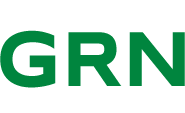The proverb, "If you want to go fast, go alone; if you want to go far, go together," perfectly encapsulates the spirit of our latest endeavor in advancing superhot rock (SHR) geothermal energy. Today, we're thrilled to announce the approval of a groundbreaking international collaboration with the International Energy Agency (IEA) Technology Collaboration Programme (TCP), which will serve as a platform for collaboration between leading projects in SHR today.
The collaboration was proposed by Clean Air Task Force (CATF), and will be spearheaded by representatives from Norway, Japan, New Zealand, Iceland, and Italy, to start - with more countries considering participation as the project develops. CATF will act as the first Task Leader to ensure the group has structure and momentum as it builds.
Why superhot rock geothermal?
Superhot rock geothermal energy taps into extremely high-temperature zones deep within the Earth's crust, offering a potentially limitless source of clean, always-on power. Unlike traditional geothermal systems, SHR could be deployed globally, providing a significant tool in our efforts to expand our clean energy resources. Countries participating in the SHR Innovation Network will play a critical role in unlocking this abundant energy source in the coming decades, and help position themselves to lead global efforts to commercialize SHR in the process.
The role of the IEA Geothermal Technology Collaboration Programme
This collaborative project will link existing global efforts on SHR and supply shared resources to help all participant projects move faster and more effectively. The initiative will be hosted under the auspices of the International Energy Agency's Geothermal Technology Collaboration Programme (IEA Geothermal TCP), which fosters international collaboration and networking among nations, industries, and organizations to advance research, development, and deployment of geothermal energy technologies.
Envisioned outcomes
Through this collaboration, we aim to:
- Connect participant projects with groups of technology advisors from around the globe.
- Create a shared platform for data from active testbeds and pilot projects, enhancing transparency and collective learning.
- Coordinate efforts across member countries to streamline objectives and measure progress by aligning on common goals and KPIs.
- Leverage collaboration between projects in multiple countries to overcome shared challenges and build from each other's learnings.
Next steps in our collaboration
CATF's immediate focus includes:
- Establishing a Steering Committee: Comprising representatives from key SHR countries, stakeholders, and project leaders to guide the initiative.
- Appointing a Task Leader and Forming Technology Interest Groups (TIGs): These groups will be appointed as experts in specific technology areas, such as drilling, heat extraction, and more. There are six proposed technology areas. The roles of these groups will be to function as advisory boards for each participating in-ground testing or pilot project.
- Identifying Pilot/Testbed Projects: Early recognition of existing testing or pilot projects for participation will be crucial in accelerating development.
- Initiating Regular Communication: Kick-starting quarterly calls, in-person meetings, and continuous knowledge-sharing among pilot teams to ensure alignment and progress. Clean Air Task Force has laid the groundwork for convening these groups informally and will use past discussions as a jumping off point for more structured and co- collaboration.
Tracking our progress
To monitor and share our advancements, we plan to develop:
- Global Project Tracking: A comprehensive map and survey capturing the status of SHR projects worldwide, including those unaffiliated with the IEA.
- Central Data Repository: A standardized, quality-checked, and publicly accessible database of non-confidential findings.
- Design Basis for High-Temperature Wells: Collaboratively developing globally accepted guidelines for wells operating above 400°C.
- Joint Publications and Workshops: Producing publications, best practices, and workshop proceedings to disseminate learnings swiftly.
- Biannual Progress Reporting: Summarizing advancements, insights, and technological challenges, with the first report targeted for Q4 2026.
CATF's commitment
Clean Air Task Force has been instrumental in aggregating this proposal, soliciting feedback, and will act as the Task Leader under the guidance of the Steering Committee to ensure the Task's completion. This initiative aligns with CATF's mission to educate, convene, and connect stakeholders by addressing critical gaps in awareness and supporting collaboration within the SHR ecosystem.
Join us on this journey
We invite stakeholders, researchers, and enthusiasts to follow our progress and contribute to this transformative endeavor. Visit catf.us/superhot-rock for updates, resources, and opportunities to engage.
Together, we're not just aiming for incremental change; we're striving for a colossal shift in our global energy landscape. By harnessing the heat beneath our feet, we can pave the way for a sustainable, energy-abundant future.









